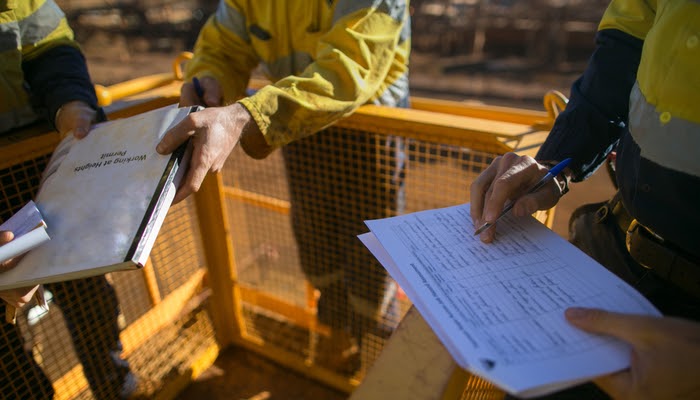An interesting study from 2018 came to our attention recently. The findings still apply today, and they show what we’ve long known at The Checker—that strong health and safety programs protect both employees and businesses. McKinsey found that management practices that focus on “hard” incentives that include consequences, rewards, and employees’ values and mindsets make workplaces safer.
McKinsey also observed that while workplace safety standards have generally improved over time across industries, individual organizations improve at different paces.
Hard AND Soft
A high level of safety for all employees is important in itself, and when companies fall behind, they also expose themselves to greater reputational risk, liability, and the danger of burdensome regulation. What's the difference between organizations that do well in safety and those that don’t?
It's no surprise that companies with good organizational health—the ones that align well around a clear strategy, execute it, and reinvent themselves over time—also usually have the best safety records. But recently, when looking closely at this relationship for organizations with similar risk profiles like those in the global energy and materials (GEM) industry, they noticed that it was not only the level of the connection, but also the mix of management practices, that are most correlated with safety performance.
Successful actions that improve safety naturally include “harder” health-related practices, like habit-reinforcing incentive systems. But organizations that have achieved exceptionally high safety standards also have to focus on “softer” practices, including taking leadership in the search for solutions and encouraging employees to “own” safety problems. They also promote strong safety values among their employees.
The Symbiotic Relationship Between Safety and Health: What Management Can Do
Analyzing both safety and OHI data reveals a strong relationship between organizational health and safety. Organizations with strong safety records outperform other ones on all critical organizational outcomes that lead to organizational health. They are also above the sector benchmark when it comes to outcomes related to learning and innovation.
Leaders of organizations where safety is highly valued, like those in the GEM sector, all recognize the significance of corporate cultures. They usually strive to create a culture of interdependence—meaning a high state of safety maturity, where the workers look out for each other from genuine concern. However, it is sometimes not clear how companies can create such a culture.
Essential management practices most strongly linked to safety can be grouped into three categories:
Financial and Non-Financial Incentives
Consequence management, which creates accountability by connecting consequences and rewards to performance, is a crucial management practice that leads to safety. Two practices—financial and non-financial incentives and recognition—are particularly significant. It’s important to recognize the types of behavior that encourage safety.
Employee Ownership of Solutions and Learning
Another important management practice is encouraging employees to take ownership of learning and innovation, together with a culture that emphasizes creativity and knowledge sharing.
One of the most effective methods to prevent accidents is the use of “near-miss” procedures, which encourage employees to recognize hazardous situations and think of solutions before safety is at stake.
Leading With Values
When promoting safety as a value - as something that they practice every day - leaders promote a true sense of commitment and help foster conviction among employees. For example, insisting on daily safety inspections sends the message that safety is paramount.
Takeaway
Safer organizations are healthier workplaces than safe ones. Organizations need to balance traditional hard incentives with supportive leadership and the fostering of employee ownership.
Image: Shutterstock











